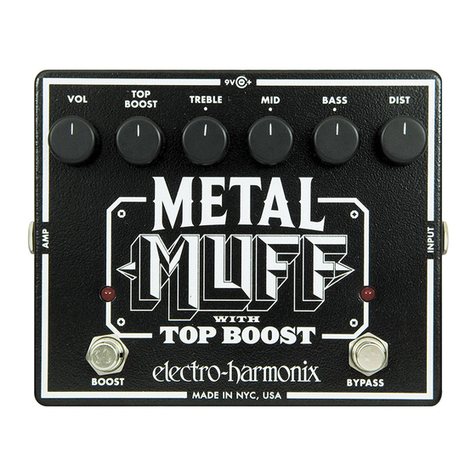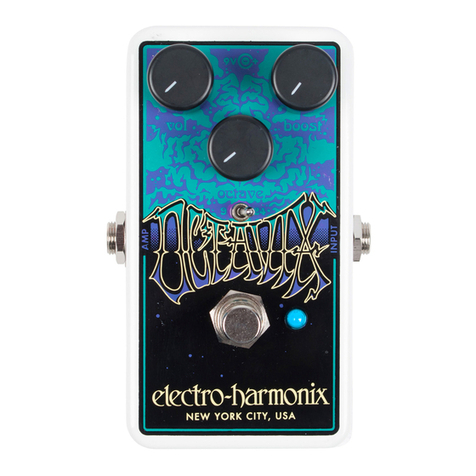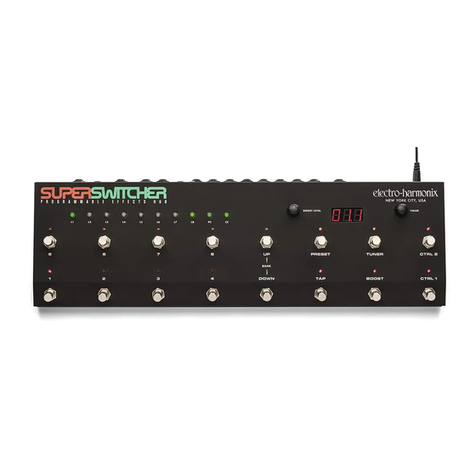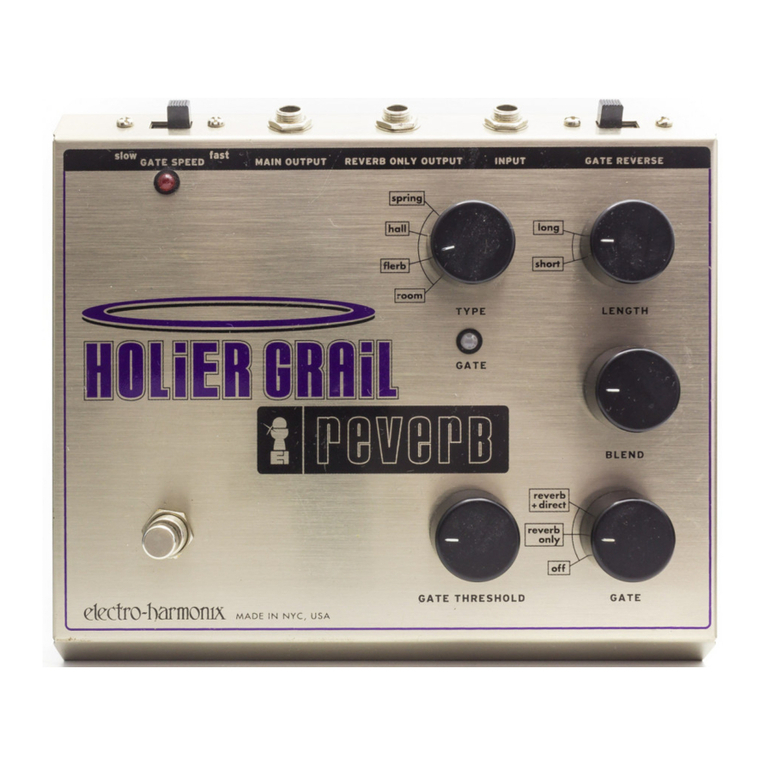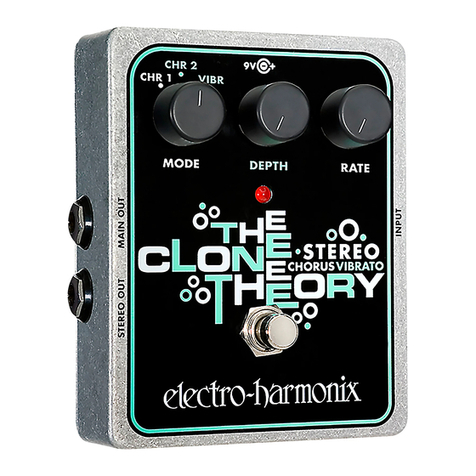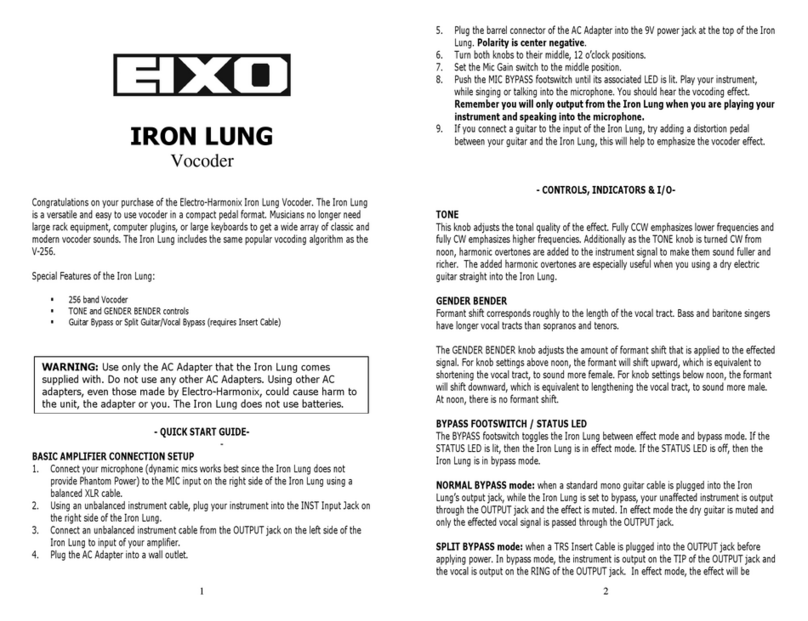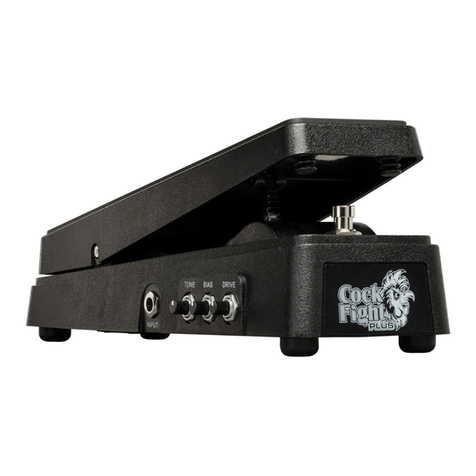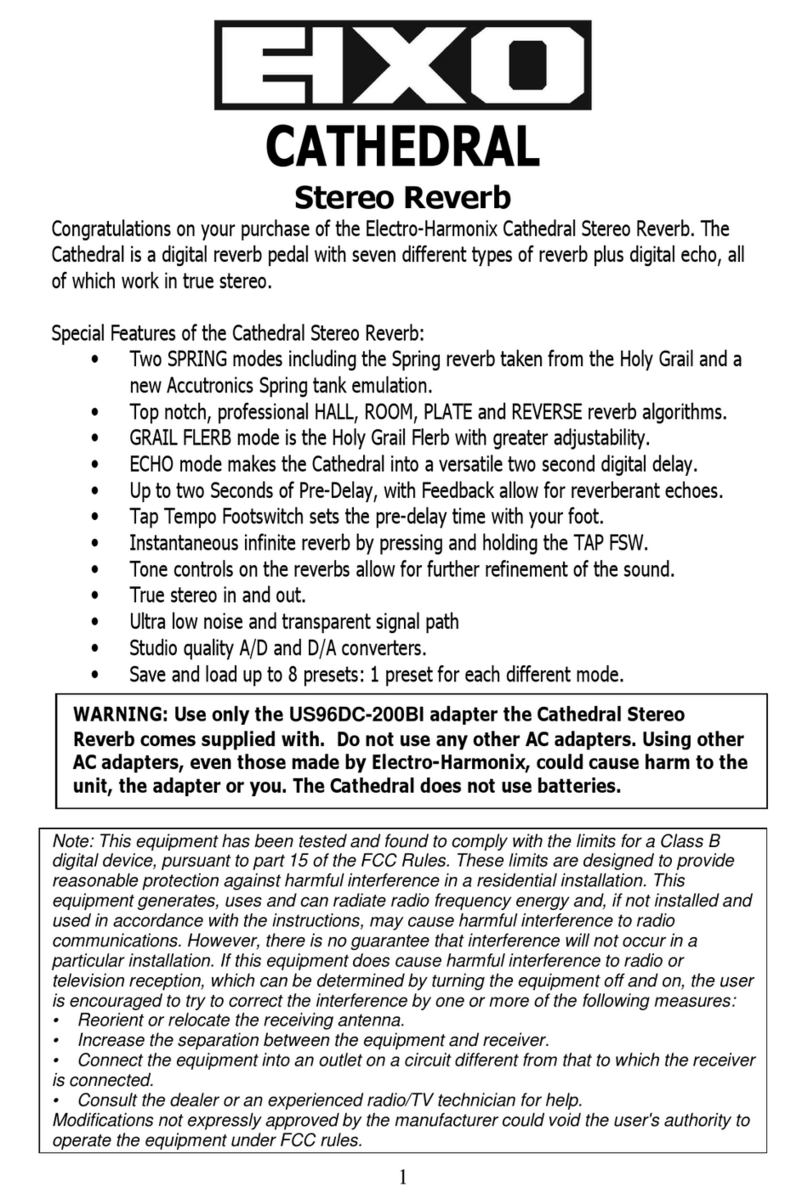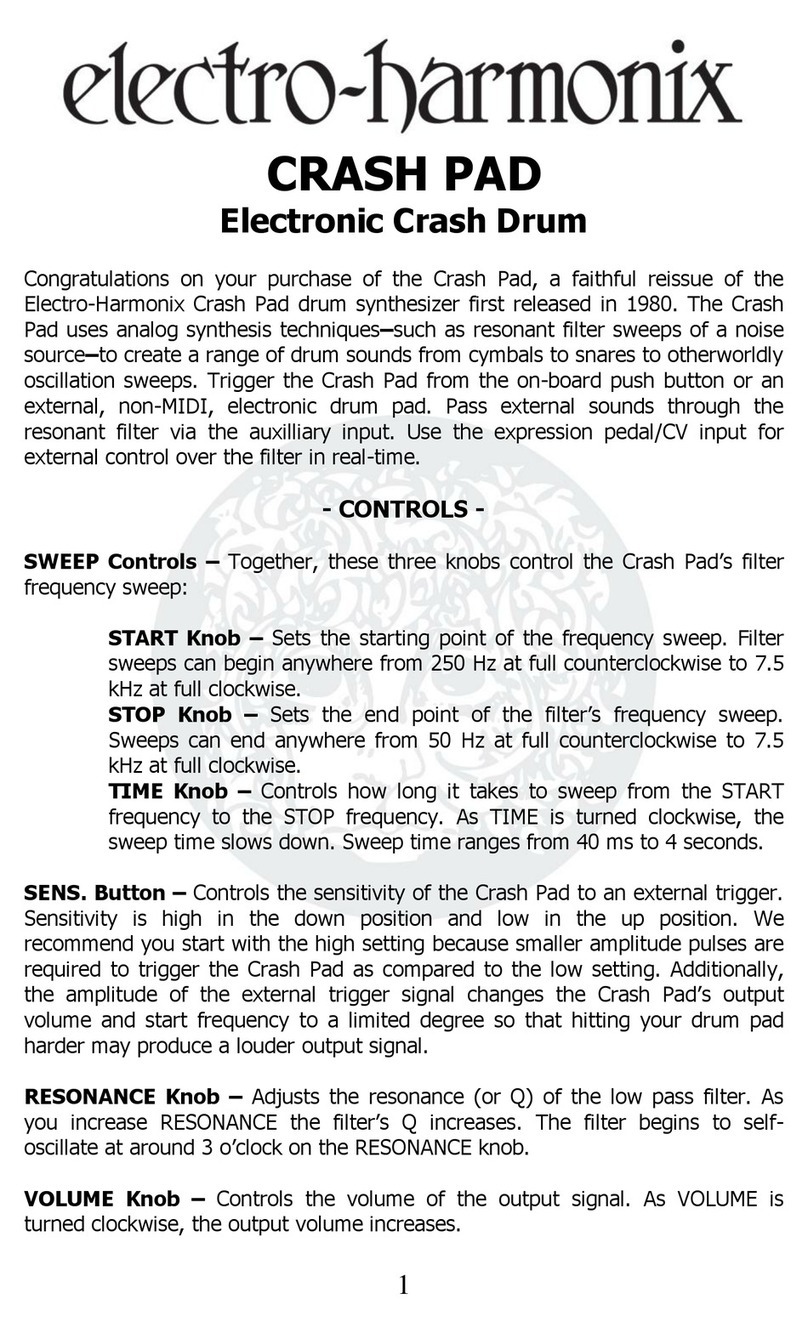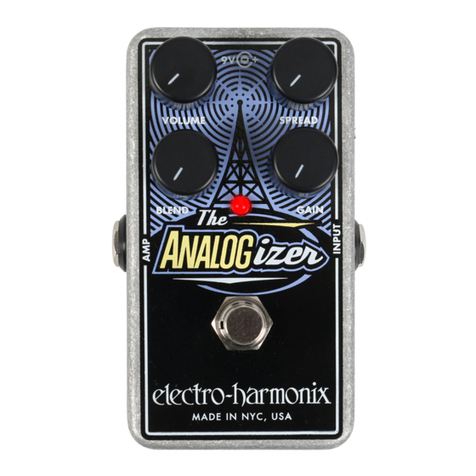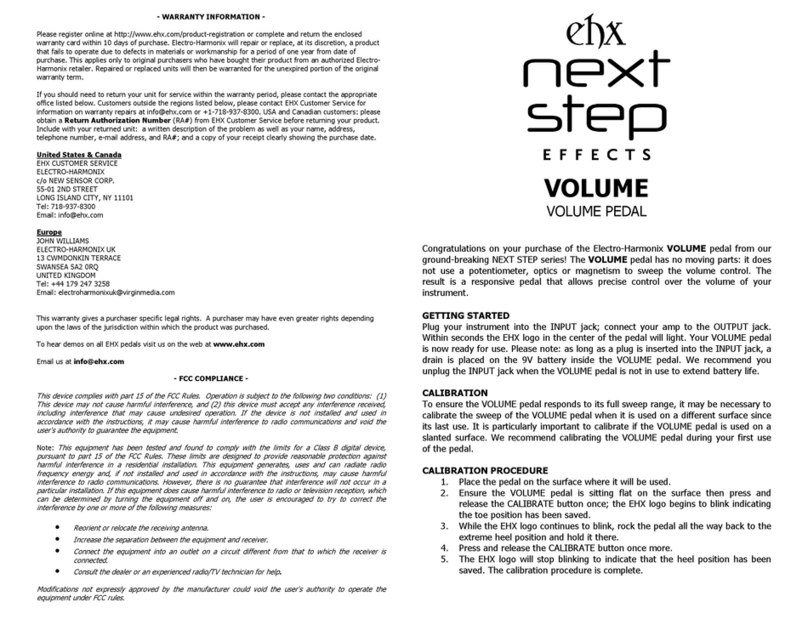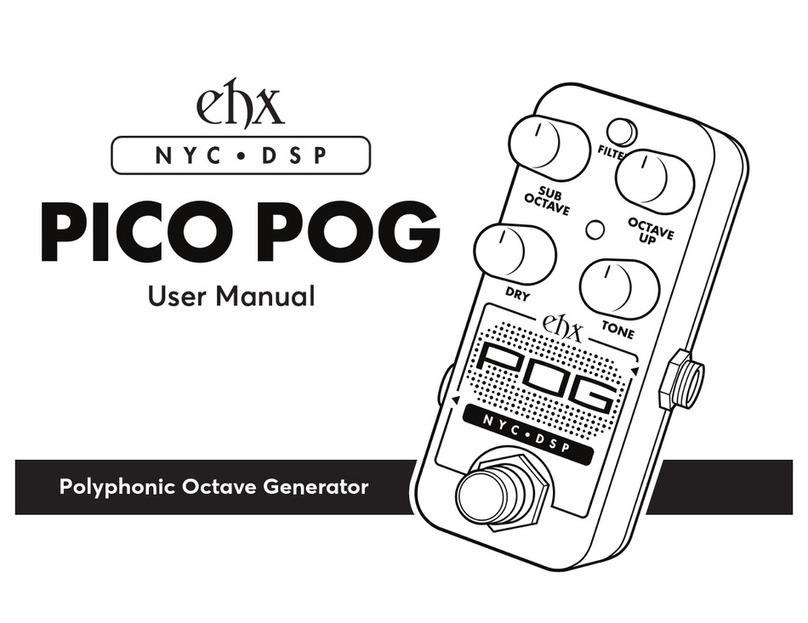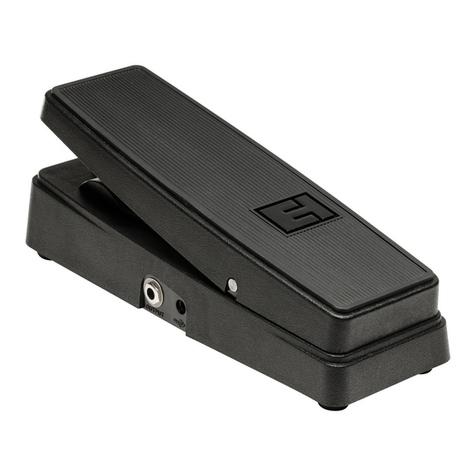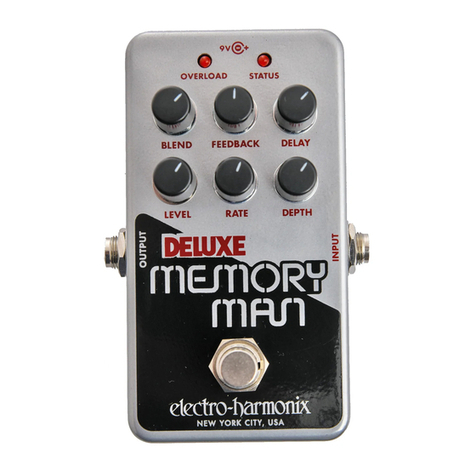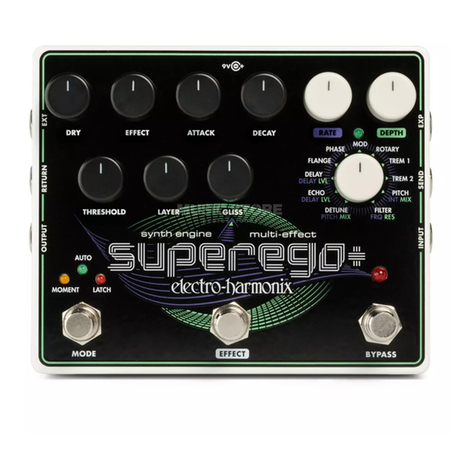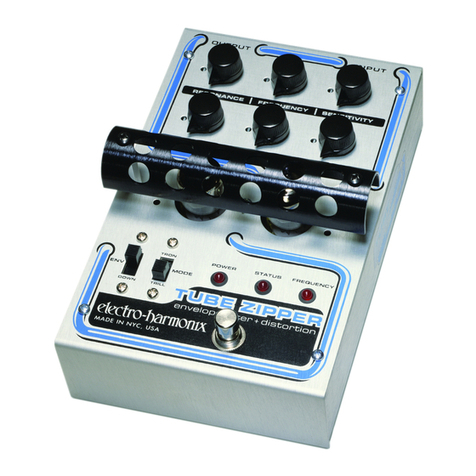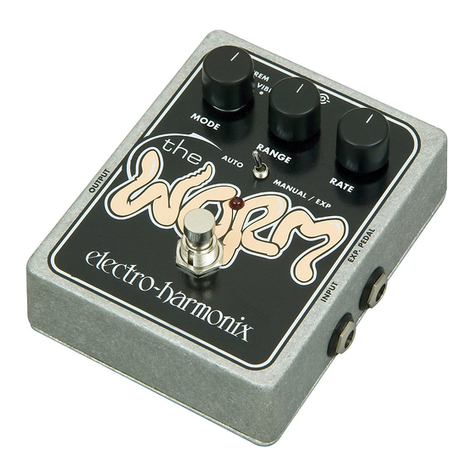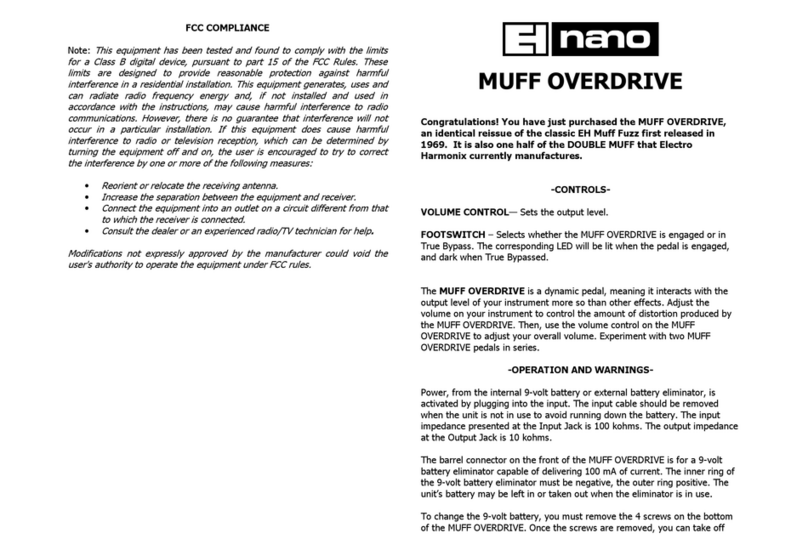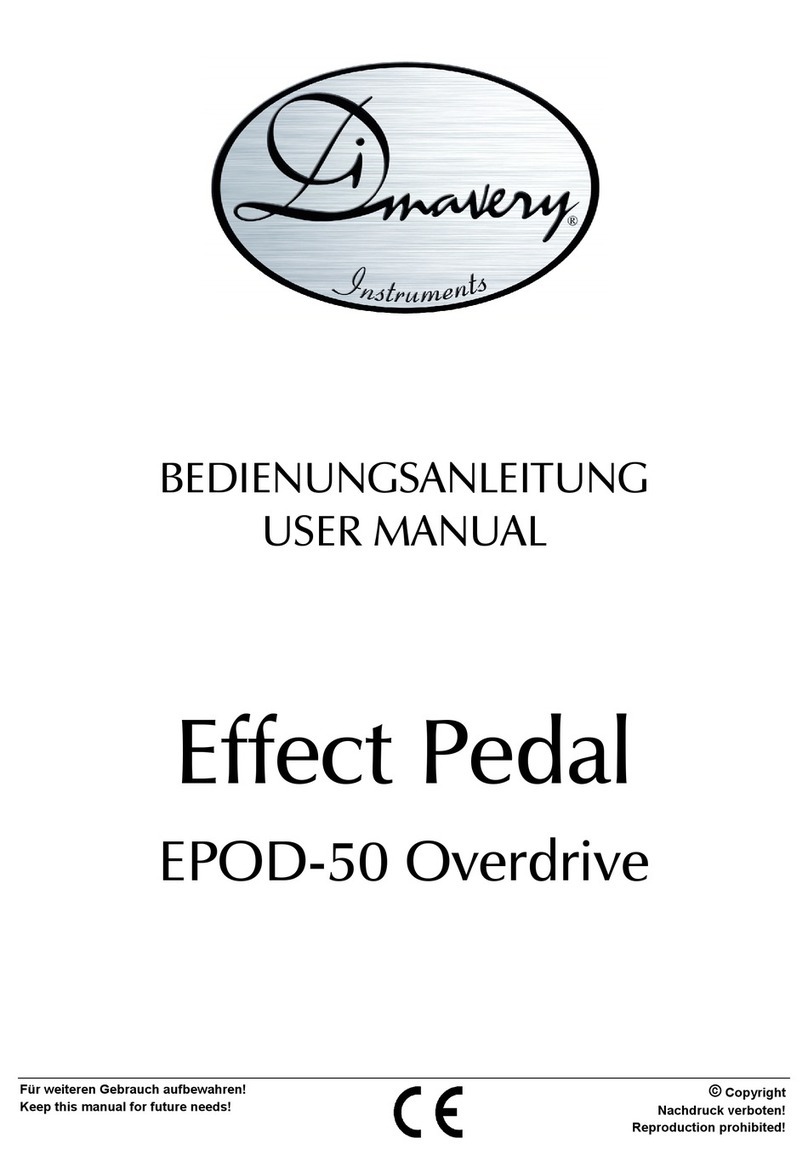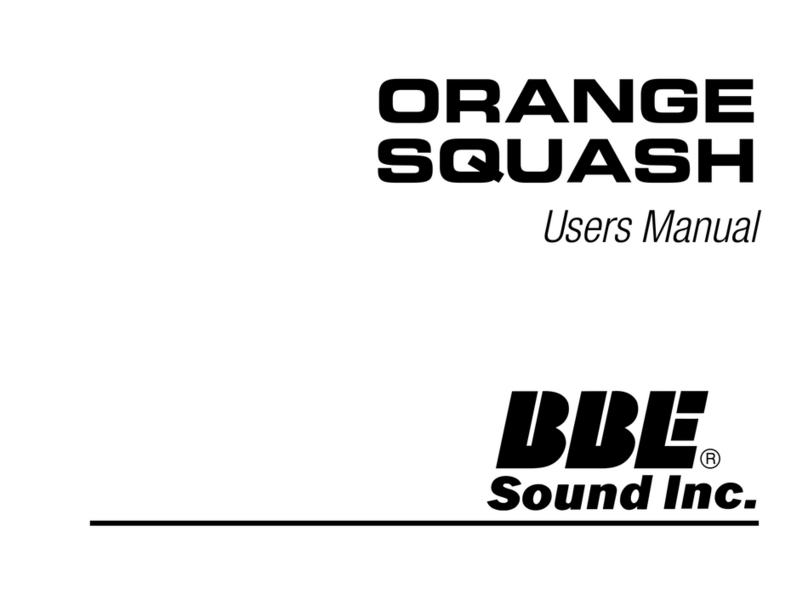Q-Tron
Envelope Controlled Filter
Congratulations on your purchase of the Q-Tron enhanced envelope controlled filter. It is a very
powerful tool for musical expression. Please take a few minutes to familiarize yourself with the
Q-Tron features and controls.
Envelope controlled filters are unique sound modifiers since the intensity of the effect is controlled by
the user’s player dynamics. The volume (also known as the envelope) of the musician’s notes are used
to control a swept filter. As the volume of your notes changes, so does the peak frequency of the filter.
-CONTROLS-
Gain Control
(0-11)
–
In normal mode the gain control acts as a filter sensitivity control and
has no effect on the unit’s output volume. In Boost mode, the Gain control functions as both
a volume control and the filter sensitivity control.
Boost Switch
(Normal/Boost)
–
Normal mode passes input signal through the filter at its
original level. Boost mode increases the signal gain to the filter according to the Gain control
setting.
Rotary Sweep Switch
(Up/Down)
–
Selects the direction of the filter sweep.
Range Switch
(Hi/Lo)
–
Emphasizes vowel-like sounds in low position and overtones in
high position.
Peak Control
(0-11)
–
Determines the resonance peak or Q of the filter. Turning the
control clockwise increases the Q and creates a more dramatic effect.
Mode Switch
(LP, BP, HP Mix)
–
Determines what frequency range the filter will pass.
Emphasize Bass with Low Pass, midrange in Band Pass and treble with the High Pass. Mix
mode combines BP with the dry instrument signal.
Bypass Switch
(In/Out)- Toggles between effect mode and True Bypass.
Your Playing Dynamics-
The Q-tron’s effect is controlled by the user’s player dynamics.
strong attack will yield a more dramatic effect, while a softer playing yields more subtle
ones.
-Jacks-
Input Jack-
Musical instrument signal input. The input impedance presented at this jacks
300 k
Ω
.
Output Jack- Output to amplifier. The output impedance is 250 Ω.
Overload LED: Lights when envelope follower reaches its maximum signal
amplitude.
-AC Adaptor-
Your Q-Tron comes equipped with a 24 volt DC (inner positive) / 100mA external power
adapter. Use only the power adapter that is supplied! Using the wrong adapter can cause
serious bodily injury and may damage your unit. This will void the warranty.
-Operation-
Set all controls to minimum. Connect your instrument to the input jack and your amplifier to
the output jack. The Unit’s status LED should be lit. Set the Q-Tron’s controls to the
following:
Drive Switch: UP
Range Switch: Low
Mode Switch: BP
Peak Control: Maximum
Boost Control: Off
Gain Control: Variable*
Vary the gain control until the Overload Indicator LED lights on the loudest notes that you
play. If no effect is noticeable, depress the Bypass switch to engage the effect. With this
setting the user should be able to approximate the sound of an automatic wah-wah pedal.
Experiment with these settings to see how the Q-Tron reacts to playing dynamics. Adjusting
the Gain and Peak controls will vary the amount and intensity of the effect. For tonal
variations adjust the Range, Mode and Drive controls.
To attain an effect similar to an original Mu-Tron III, set the Q-Tron’s controls to the
following:
Drive Switch: Down
Response Switch: Fast
Range Switch: Low
Mode Switch: BP
Peak Control: Mid Point
Boost Control: Boost
Gain Control: Variable*
